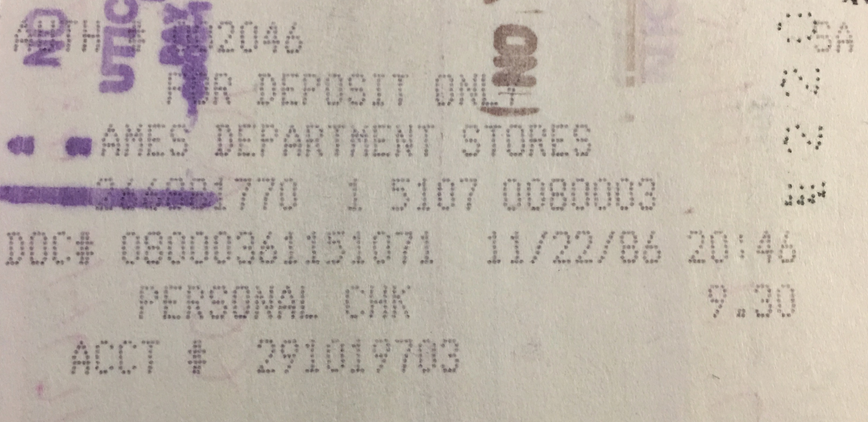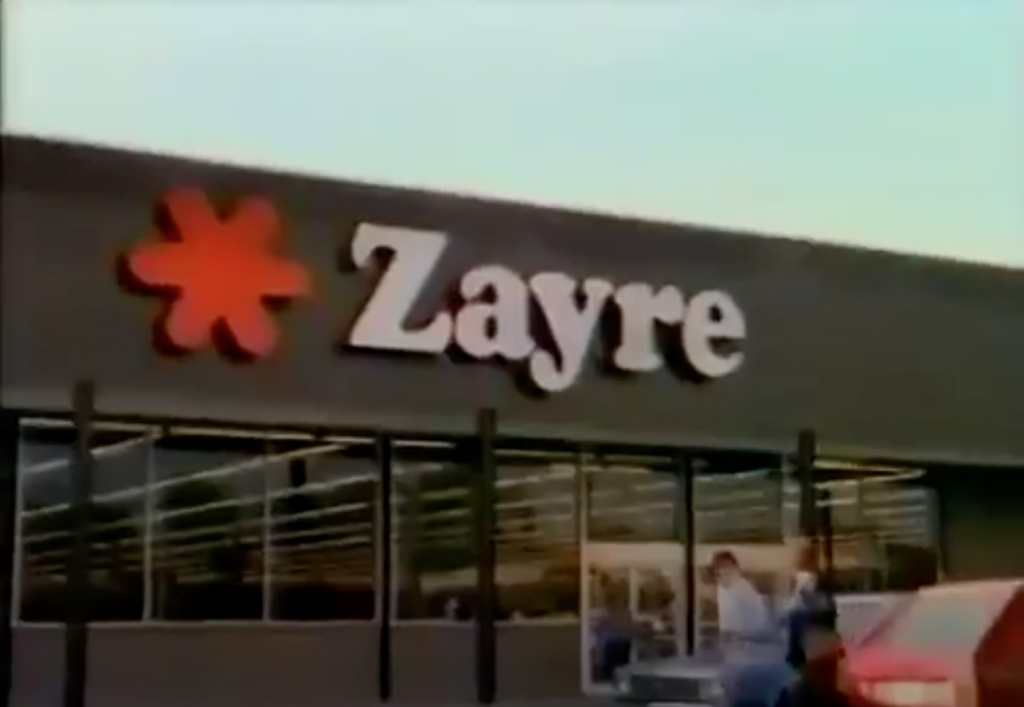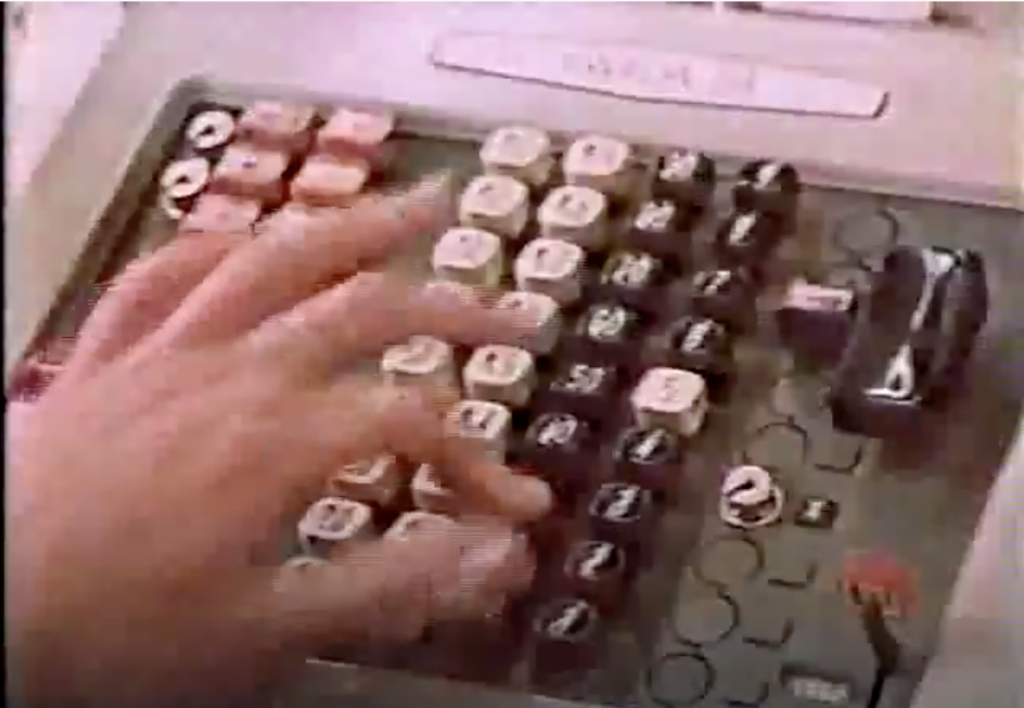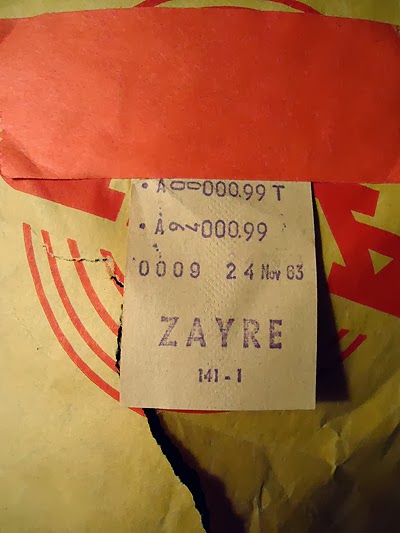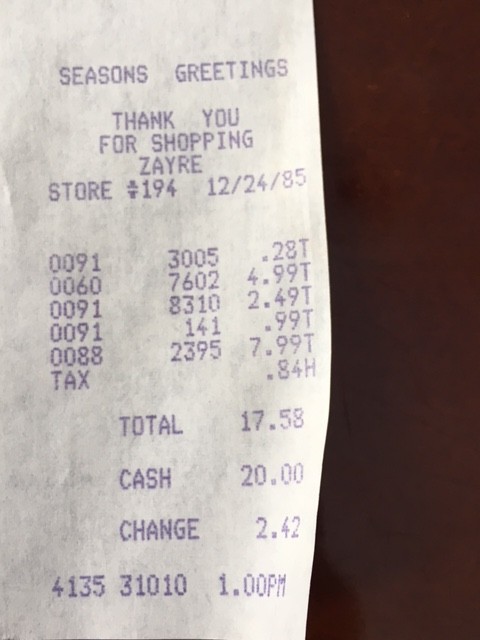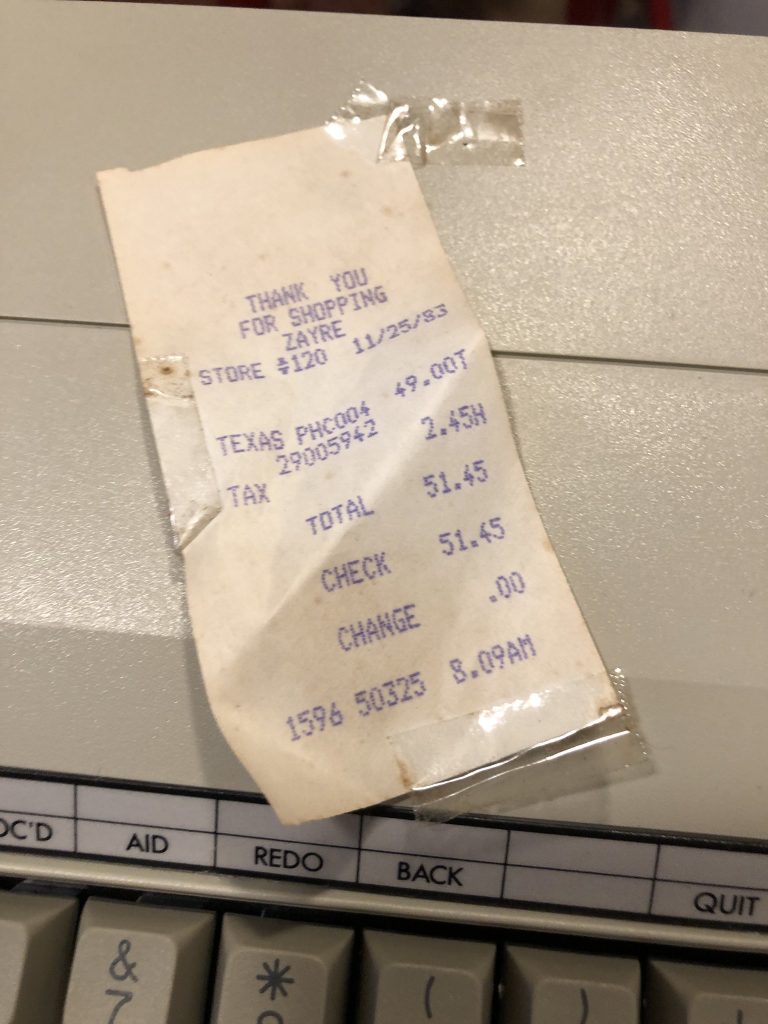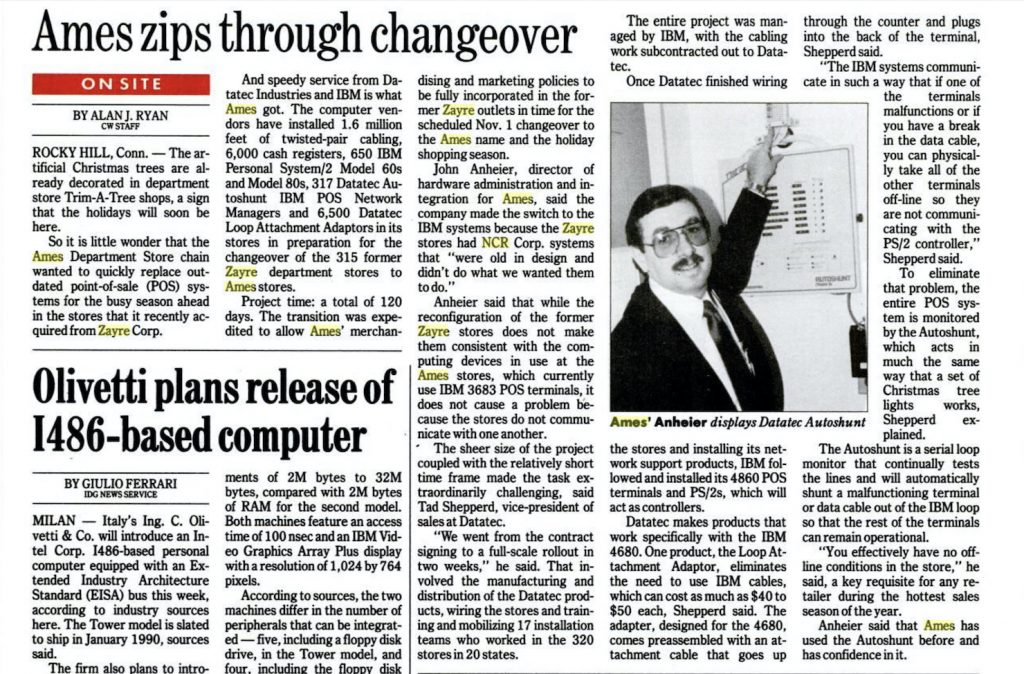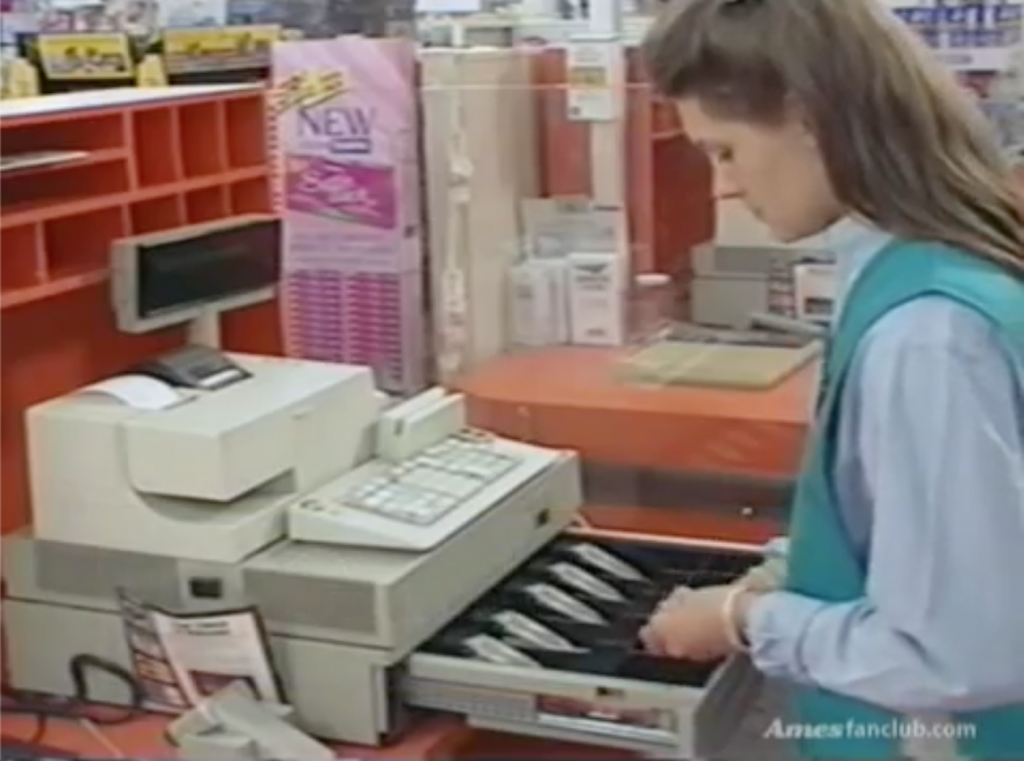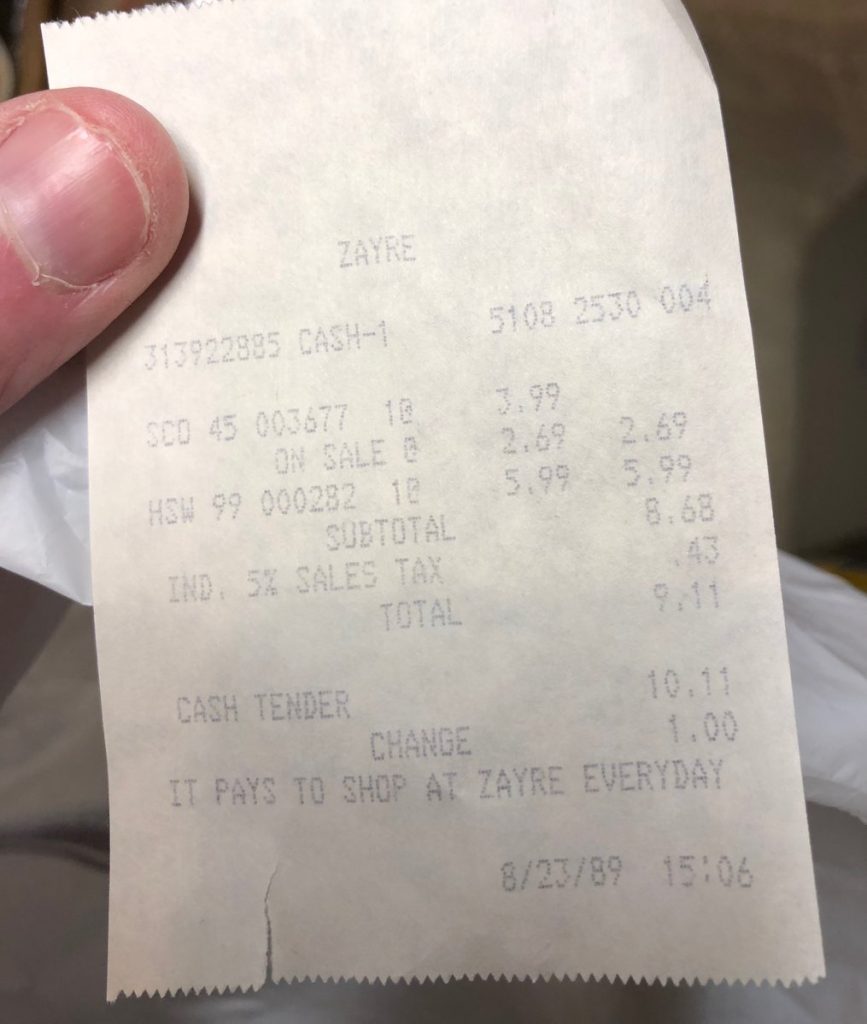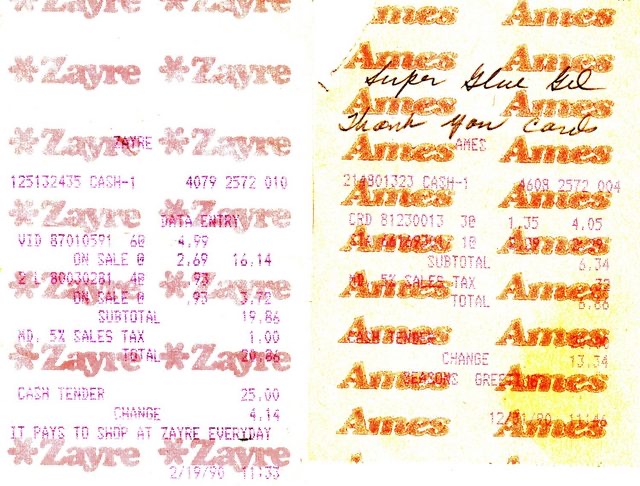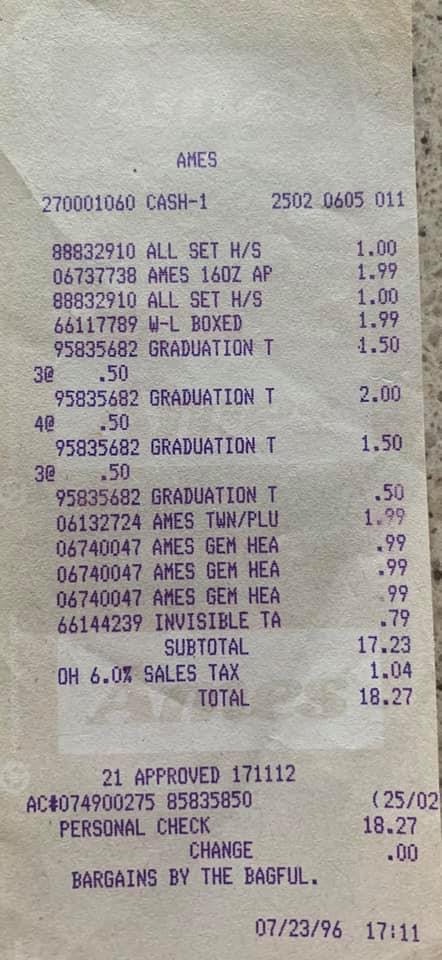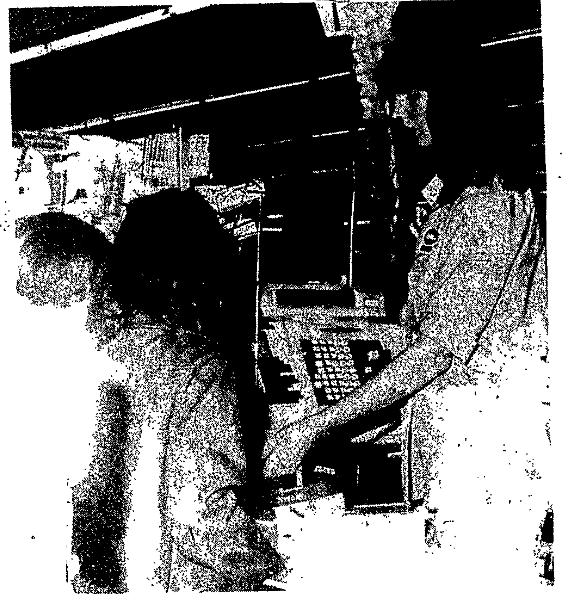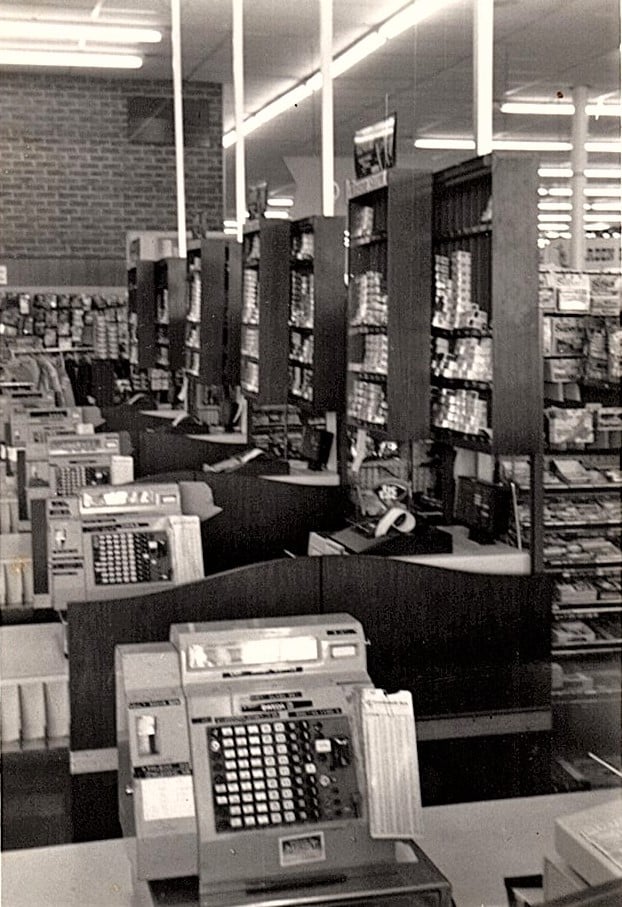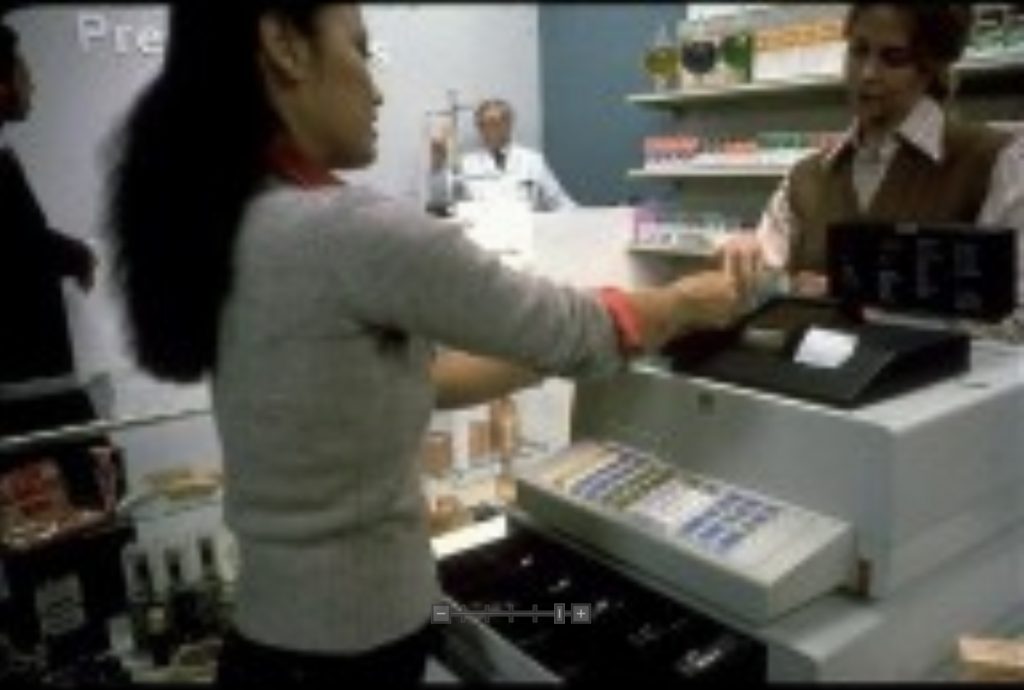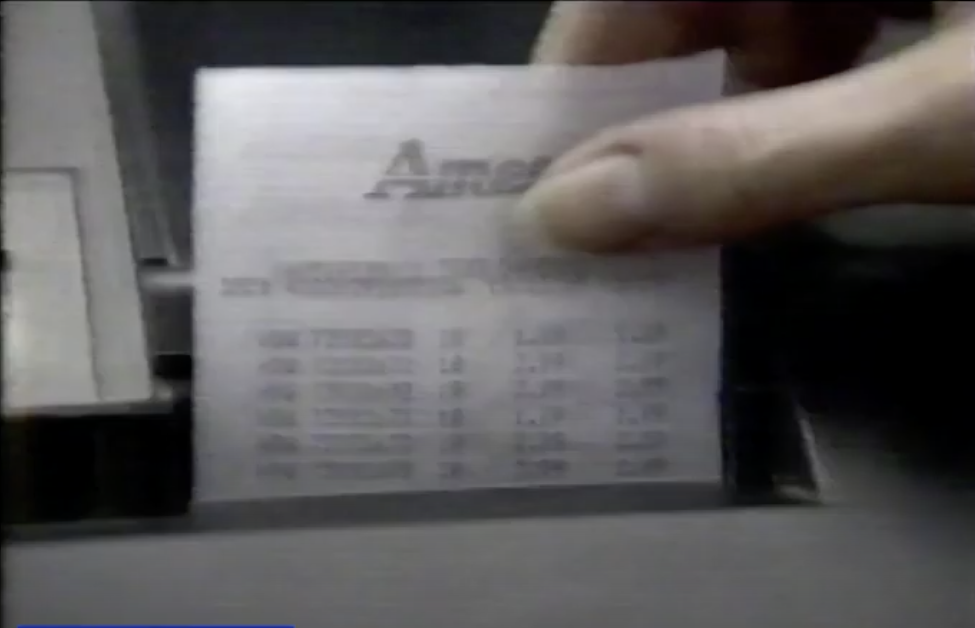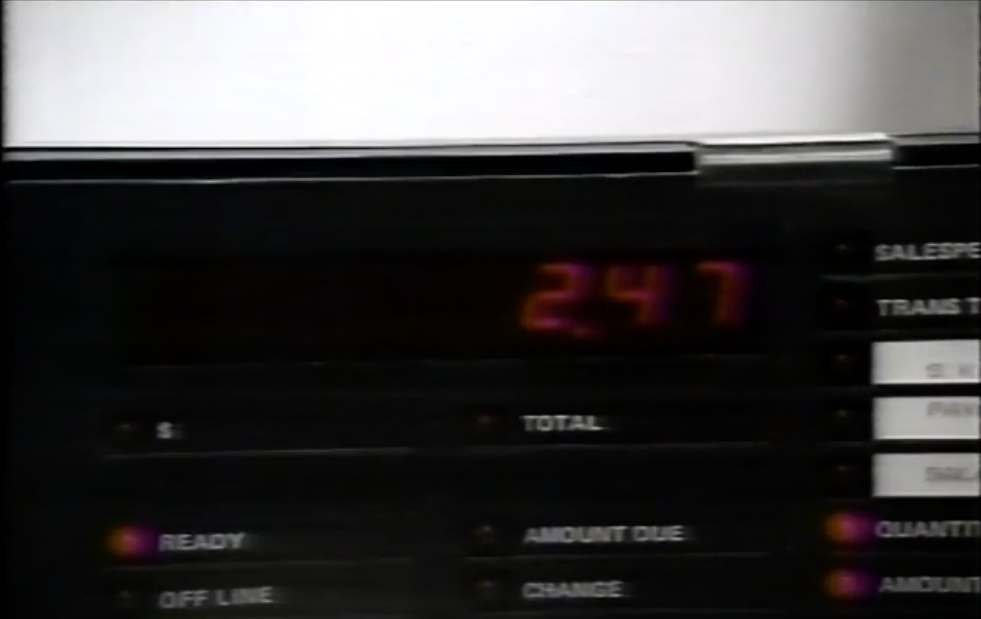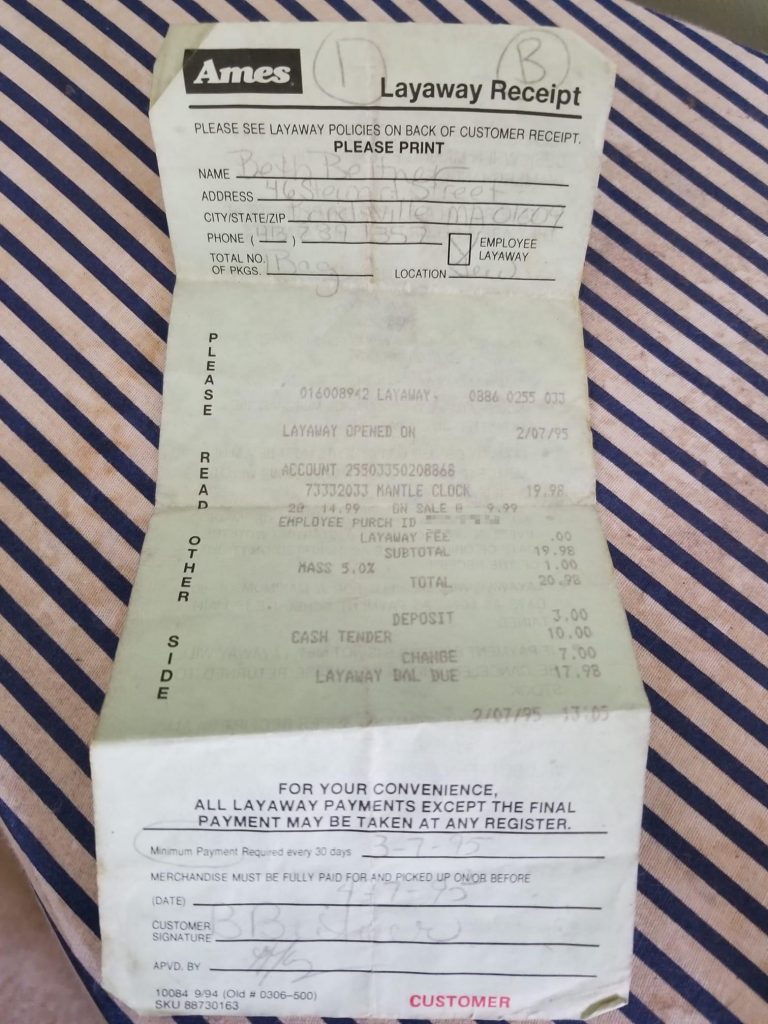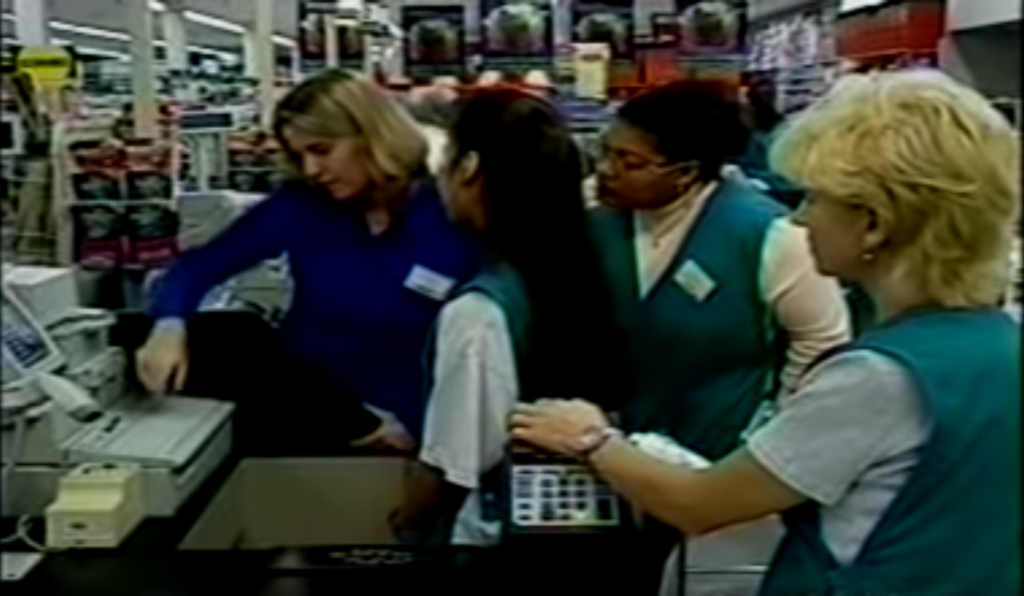
In 1997 or so, Ames decided it was time to move to the next stage of their point of sale technology implementation. By this time the IBM 3680 hardware, running the AWare/4680 modifications, had been in the legacy Ames stores for well over a decade, and the IBM 4680 hardware in the former Zayre stores were nearly a decade old as well. With murmurs of Y2K on the horizon, Ames moved forward and decided to upgrade their point of sale equipment with a unified approach, tying their front end systems in with their back-end systems.
Ames decided not to continue with IBM’s General Sales Application and instead went with Cornell-Mayo Associates of New Jersey and their OPUS Store System package.
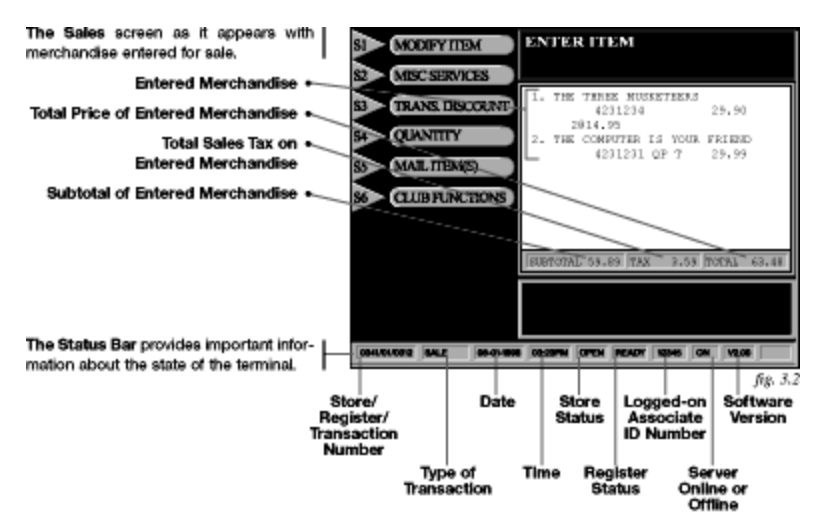
Working with Cornell-Mayo, Ames installed Siemens-Nixdorf hardware for their point of sale systems. The cool thing about CMA’s OPUS Store System Package was that it could run on pretty much any hardware configuration at the time. If the terminal had enough horsepower it would run with a graphical interface. An older terminal could have its life extended and would run OPUS in a text-only interface. The approaches to the system used the same keystrokes, commands, and workflow, so an operator would feel comfortable in front of either type of terminal. CMA’s OPUS Store System also ran on any architecture, meaning it could run from a Windows NT terminal server or it could run on Unix or Linux.
When Ames made the switchover from AWare/4680 to the OPUS Store System I lived near a former Zayre store in New Hartford, New York. Unlike the day back in the early 1980s when I saw the folks removing the old Sweda cash registers and replacing them with IBM 3683 terminals, I did not get to see any of the switch over at this store in New Hartford. I did know folks that worked at the store, and in our brief conversations about the store (and my interest and history I had with Ames and its point of sale systems), they mentioned they really liked the upgrade of the point of sale systems and they were happy they could scan in the receipt number instead of punching all those numbers in while working at the service desk.
It’s the little things that make our jobs easier, right?
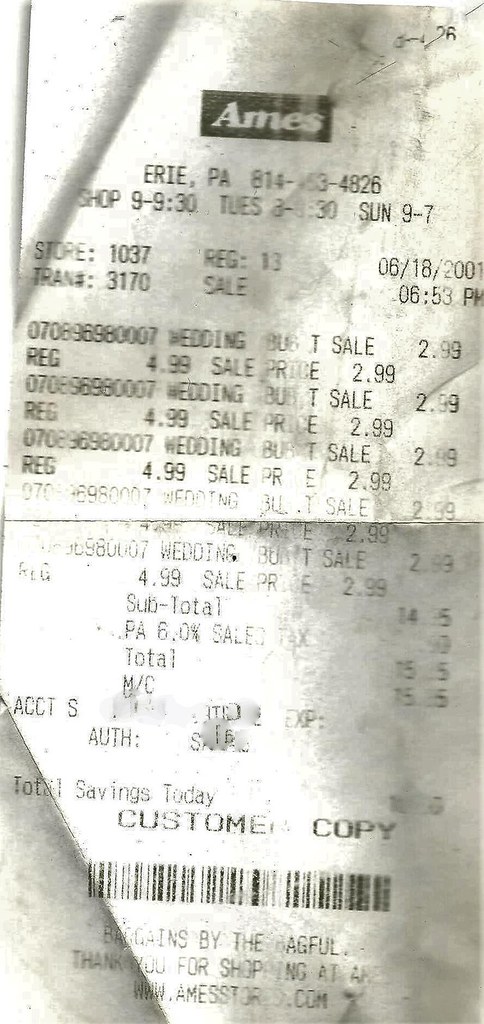
With the move to the CMA system, Ames was now printing the UPC code along with the item description on their receipt. Functions were controlled through “S” keys on the keyboard (S1, S2, S3, etc), which would map to functions as dictated by the user interface, depending on where we were at any given point of a transaction. The thermal printers printed the receipts quickly and the Ames logo was back loud and proud at the top of every receipt!
Ah, but what about the eight-digit SKUs that had endured for so many years with the IBM systems? They made their way to the backend database, and if an item didn’t scan for whatever reason and the UPC wasn’t to be found in a manually keyed in lookup, the cashier could enter the eight digits and the press the SKU button, which was located right where it was on the old IBM systems, to the right side of the keyboard adjacent to the “789” row and the function key row above it.
Curious about these new systems, I sent email to the Ames MIS department back in Rocky Hill, Connecticut and had a really nice email exchange with the team responsible for installing and maintaining this new point of sale system. Markdowns and sales were easier to maintain, the system used standard hardware, and all aspects of the store’s business was connected and communicating with each other and with the home office.
Ames was ahead of the Y2K curve.
A quick side note, the IBM 3683 terminals in the legacy Ames stores probably would have struggled with the year 2000. Another retail chain was still using IBM 3683s well into 2001. Receipts from after the Y2K scare were dated 1972 to compensate.
In late 1998 Ames purchased the Hills Department Stores chain. At the time Hills was operating 155 stores, all on the IBM 4680 OS system running General Sales Application, or some customized variant of it. The acquisition resulted in duplicate Ames stores in some towns. Where I went to college in the mid 1980s there a legacy Ames store, an acquired Zayre store that also became Ames, and then eventually the legacy Ames store was shut down, however, there was a Hills across from the Zayre-turned-Ames, and one of them had to go. I believe it was the former Zayre that was closed down.
There were no Hills in the Mohawk Valley of Upstate New York, but there was a Hills near my hometown. This Hills was in the now long gone Penn Can Mall and it was converted to an Ames. The company handled this transition differently in that they shut the Hills down completely and quickly remodeled the store with a new green-and-black scheme, and then opened up as Ames with a grand opening celebration.
Like the day when Ames #80 opened up in the late 1970s, I attended the grand opening of this new Ames at Penn Can Mall, and was surprised to see not Siemens-Nixdorf registers at the check stands but rather IBM SurePOS terminals. Thinking Ames had gone the “Zayre conversion route” again with their point of sale systems, I was happy to see that Ames had done it the right way, and while this converted Hills may have been running IBM SurePOS registers, it was still running the Cornell-Mayo Associates OPUS Store System. The entire chain was still in communication harmony. I asked Ames’ MIS Department about this over email, and that’s when I learned about the openness of the CMA software and that it could run on just about on any hardware. Siemens-Nixdorf was undergoing some changes (they would become Wincor Nixdorf) and IBM won the bid with their SurePOS systems. And I confirmed there still was a “SKU” button on the new systems at the former Hills. And on a quirky note, the location of the monitor and printer on the IBM systems was swapped with the configuration on the Siemens-Nixdorf systems. I have no idea why this was the case.
Other chains in the U.S. were running the same CMA software package as Ames, and you could tell this by the presence of the “S” function keys and the format of the receipt. Most notably in my experience was Barnes and Noble, who ran the same software on NCR terminals of the time. As of a few years ago, Cornell-Mayo Associates was purchased by a company called Retalix, who in turn was purchased by NCR. I believe OPUS Store System became OPUS Millennium Store System and today is called OmniPOS. The newest iteration is available for just about any operating system, including mobile devices such as iPhones, iPads, and Android hardware.
It would be a couple of years later when Ames would announce their declaration of bankruptcy and their intention to end the chain after 44 years of doing business. I remember when I heard the news being rather disheartened, as Ames had been a part of my life in some way since I was in my single digits, and my eccentric interest in computers, which in turn became a very successful software development and engineering career, was fueled by the growth of technology with Ames’ point of sale systems.
While scouring the Internet for information I found a couple of receipts posted online from Ames’ final days and I was happy to see some familiar numbers printed on the slips.
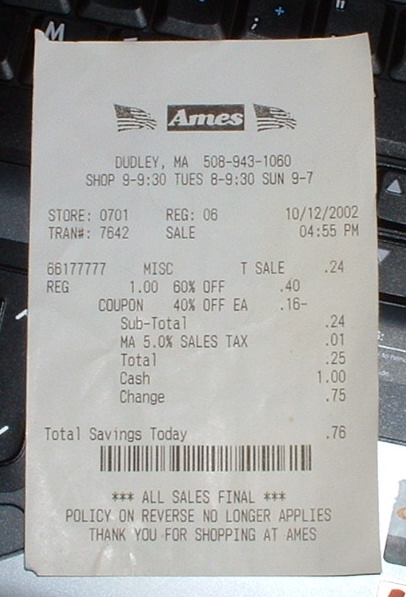
Even in the final days of “Bargains By The Bagful”, Ames was still using the eight digit SKU numbers from days of yore.
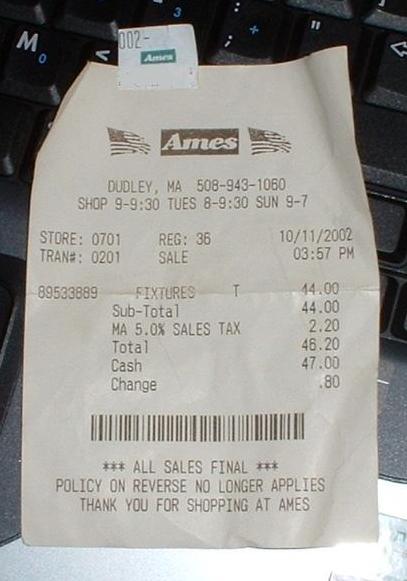
I have to wonder if Ames still had any candy bars in stock in those final days, if the cashier would have entered 67235515 on the Siemens-Nixdorf or IBM SurePOS terminal running the Cornell-Mayo Associates software.

